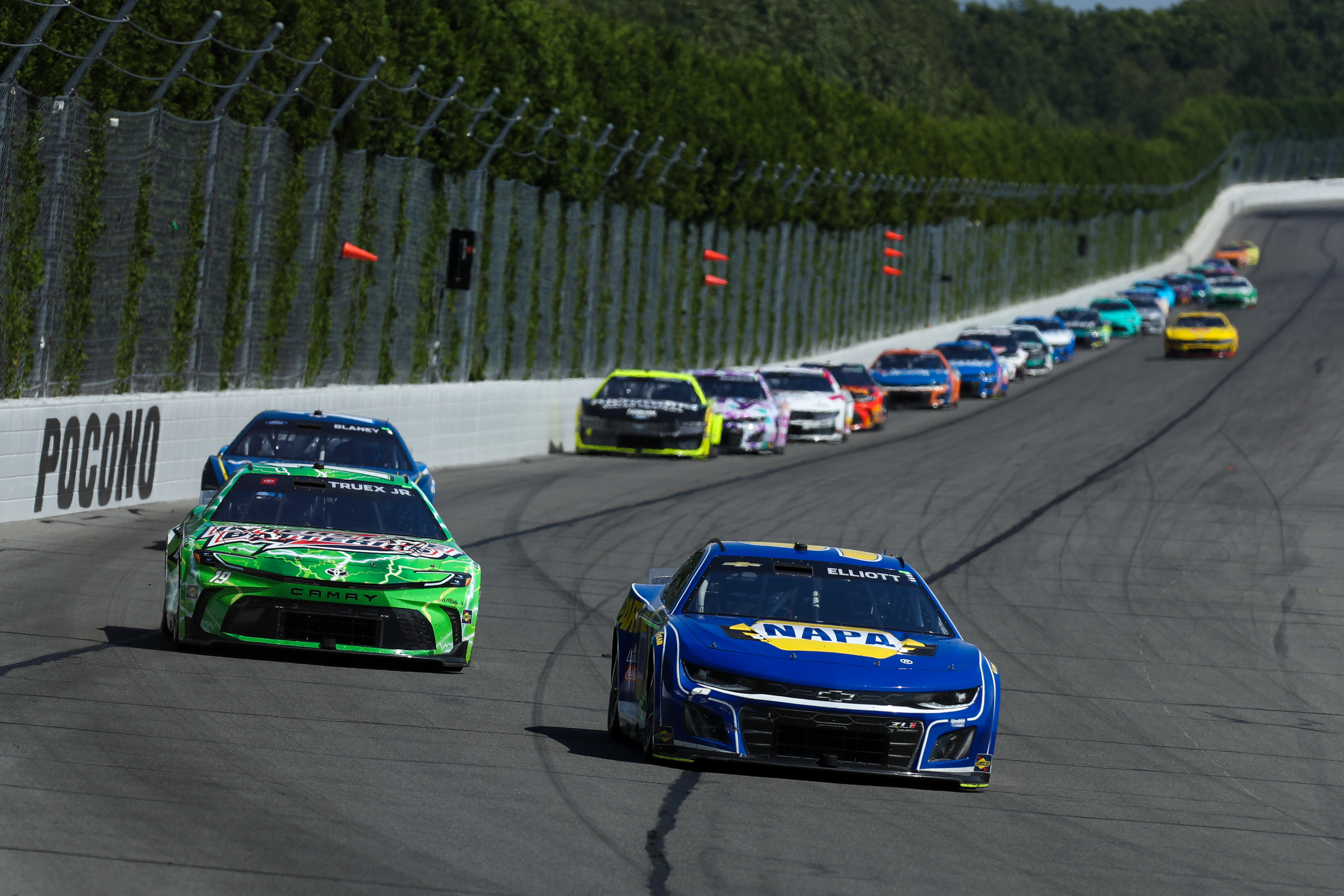NASCAR has seen many rule changes in the past few decades to enhance safety, competition, and entertainment. Here are seven of the most dramatic changes that have greatly influenced NASCAR.
7. Ban on wall riding (2023)
After Ross Chastain’s infamous wall ride in Martinsville 2022, NASCAR has put a ban on the move in 2023. The last lap maneuver in which Chastain rode along the wall to overtake a number of drivers in the last lap was a safety risk. This new rule imposes a time-based penalty to any driver who will try the stunt, balancing the risks against the spectacle.
Also Read: Corey Lajoie issues first comments since Spire Motorsports said they would part after NASCAR season
6. Elimination of the caution clock (2017)
The Truck Series implemented the caution clock in the 2016 season, imposing a caution every 20 minutes of green-flag running, but a new NASCAR rule quickly dropped it the following season.
It was highly unpopular among fans and different teams. They were complaining that it introduced superficial pauses and broke the natural flow of races.
Related: 10 best NASCAR drivers of all time
5. Car of Tomorrow (2007)
The Car of Tomorrow (CoT), launched in 2007, was designed with an emphasis on safety and cost-efficiency. It had a more rigid roll cage, energy-absorbing materials, and a higher roof, which was intended to better protect drivers in case of accidents. Although, at first, there was some resistance to these changes in NASCAR rules because of the car’s different feel and appearance, it was a huge leap forward in driver safety.
4. Introduction of stage racing (2017)
Stage racing, which first appeared in 2017, meant that NASCAR divided races into three parts as an alternative to the Caution Clock. Then at the end of every stage, the top 10 drivers would receive points. This change ensured that races were interesting throughout the event instead of just at the end. It also introduced strategic elements. Teams now decided when to go for stage points rather than for a better overall race position.
Also Read: NASCAR team owner clears air on partnership with Pitbull
3. Playoff points and elimination rounds (2014)
In 2014, NASCAR fine-tuned the Chase for the Cup format by adding elimination stages and playoff points. Drives earned points throughout the regular season by winning races and stages, and they carried these points through the playoffs. This format increased the level of competition as drivers had to drive consistently well to advance to the next round.
Related: Top 8 NASCAR Engines of All Time
2. Green-White-Checkered finish (2004)
The Green-White-Checkered (GWC) rule was a big change in NASCAR rules and helped to avoid races ending under caution. As per this rule, if a caution was thrown during the final laps of the race, an extra lap would be added. The objective is to let the race finish under the green flag. This change greatly enhanced the thrill and uncertainty of how races would end.
Related: 5 NASCAR drivers who switched teams and failed
1. Introduction of the Chase for the Cup (2004)
The most significant change that took place at NASCAR was in 2004 when the organization introduced the Chase for the Cup. It meant that from then, there would be no season-long points battle anymore and that the top 10 drivers (later 16) after 26 events would progress to the playoff stages. This change intensified the competition toward the later part of the season. That way, it guaranteed that the title race would be undecided until the final race.
Related: 20 richest NASCAR drivers of all time: Where does Dale Earnhardt Jr. land in the top 20?

